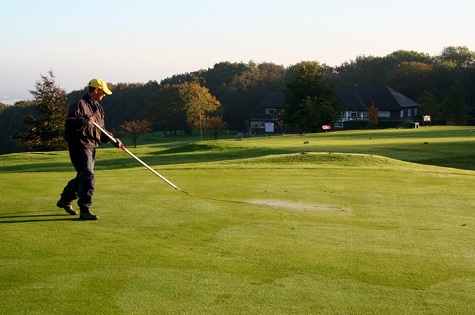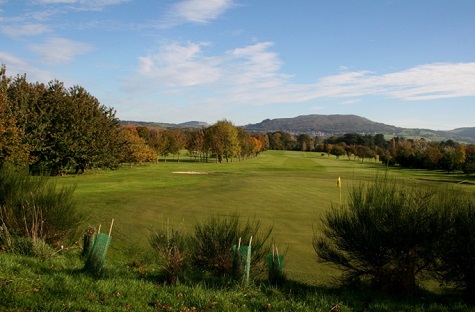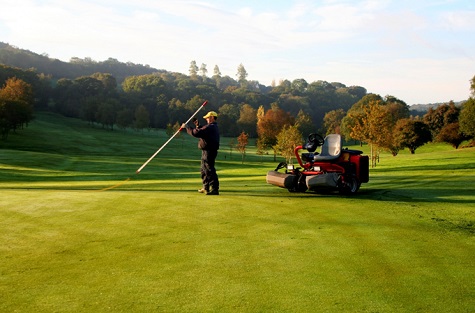

In 2023, I wrote a series of monthly articles, and their key purpose was to help all readers increase their understanding of sustainability, learn from the experiences of others and help them deliver sustainable practice in their own organisations and operations. In this new series, I am taking the opportunity each month to look in more depth at individual organisations. How are they seeking to be more sustainable and, importantly, how are they seeking to advise and support members or customers? This month we focus on BIGGA, an important organisation supporting greenkeepers, and I am grateful for their time in meeting me to discuss these issues.
The British and International Golf Greenkeepers’ Association (BIGGA) has a mission to actively work to enhance the professional reputation and well being of golf greenkeepers and other sports turf professionals. As Jim Croxton, as its CEO, is keen to point out, above all, BIGGA is a people organisation.
The three core components of its business strategy are:
Jim firmly believes that it is vital to retain and grow the golf sector and, in doing so, ensuring that it is sustainable is a key priority. BIGGA very much recognise the three key pillars of sustainability in terms of economics, environment and social factors and they seek to take a holistic approach in addressing sustainability and advising its members. First and foremost, whatever practice is undertaken, or decision made, it must be economically viable, or sustainability falls at the first hurdle. Running a golf course needs to be one which covers costs and leaves surplus for investment.

Delivering the strategy
Moving on from that, BIGGA identify three key strands in aiming to deliver their strategy in a sustainable manner.
The first is land. In England alone, golf courses represent about 1% of the total area. There is a key responsibility on golf to manage this sustainably. The second strand, as defined by them, is resources. There is a key responsibility to maintain biodiversity and also address very important areas of water management and integrated approaches to weed, pest and disease management. The issue of water is of growing importance going forward. The final delivery strand is people. Jim Croxton states ‘’Golf is a sport which has unique characteristics. Each course offers a different environment and experience. It is not just about playing golf but enjoying the surrounds and all that nature offers’’.
Managing the land

So how specifically are these strands being addressed? In terms of land, BIGGA seek to emphasise that golf in itself is already doing a great job in terms of sustainable practice, especially in terms of the environment. The public perception is of a manicured golf course at a televised major venue, yet across the country, the majority of courses offer much more. Jim points out that the average golf course might occupy around 40 to 50 hectares. Of this, say approximately 1 hectare is putting surface and a further 10 to 15 hectares are fairways, tees and approaches. That leaves the rest, outside of the Club House and workshop, to be the rough, trees, nature areas etc. A recent piece of research demonstrated how important golf courses were in cities, critical for wildlife and spaces to breath. Grass and trees are important carbon sinks. Of course, how effective this is depends upon their management, but there is no doubt a golf course taken as a whole can make a real contribution to biodiversity and reducing carbon emissions.
Sustainable use of resources
On resources, again there are many factors to consider. Sustainable practice is in my mind best defined as good practice. It is about adopting that integrated approach, developing a preventative culture in terms of weed, pests and diseases, rather than a problem solving one, and creating the very best conditions for grass growth and health which will inevitably lead to lower costs of its maintenance. Just one example of such action, which I have referred to in previous articles, is tree planting. Trees are fantastic means of carbon capture, provide landscaping and add to the player challenge. However, planting in the right place is essential. A tree planted today is going to grow and this must be assessed at the outset. Many cases are reported now of trees planted 50 or so years ago looming over a fine turf playing surface. Grass is a full sun loving plant and often will not perform very well in shade. Removal of these trees may be a difficult choice but, in the overall picture of creating a more sustainable course with less turf disease, it may be absolutely the right thing to do. With less pesticides now available, the removal of certain trees now in the wrong place will assist directly in managing a fine turf playing surface, with less intervention for disease, as natural sunlight and improved airflow will assist greatly. It is sustainable practice in action, especially if new trees are also planted in the right place.

Another critical resource is water and how this is managed. Creating water storage, recycling water and ensuring optimum levels are applied at the right time are all part of good sustainable practice. Indeed, with pressures for water supply continuing to grow, with increasing demand for housing and the like, being able to ensure water is used optimally and not wasted is crucial. Water harvesting and computer control of irrigation are just elements in the need to adopt the most sustainable approach to water management.
People - the key component
And the final strand key to BIGGA, in supporting its mission, is people. Without qualified professional staff, golf courses cannot be effectively and sustainably maintained. BIGGA regard it as vital that golf facilities value and support these key individuals as well as ensuring they have access to suitable continuing professional development (CPD) opportunities. BIGGA provide a strong education programme with practical courses on offer through events such as at its major exhibition in Harrogate each year. Its training is a response to needs and BIGGA point out that very much a priority is the need to develop and grow sustainable practice. Their involvement in the annual Environmental Awards is an example. Since their launch in 1995, the aim has been to recognise, reward and promote outstanding individuals and golf courses, no matter how big or small, for the time and effort they have put into protecting and preserving their unique surroundings. The awards have the support of some 600 organisations.
With the ever-increasing spotlight on environmental matters, the awards highlight how golf courses provide a positive contribution to wildlife and the communities in which their members live and work, and we should celebrate it. BIGGA are also very much aligned with the R and A’s 2030 project and its objectives; BIGGA employs a trained ecologist to give advice to its members on projects small and large.

Sustainable Practice as an organisation
As an organisation itself, BIGGA has taken steps to increase re-cycling, reduce plastics and explore every opportunity for energy conservation and use of green fuels. There has been logistical planning to reduce the need for car travel and the car fleet switched to hybrids. BIGGA is also proud that, at its British Turf Management Exhibition (BTME) in Harrogate in recent years, it has assessed and sought to reduce the carbon impact of the event. Its ‘Plant a tree scheme for BTME’ in 2023 resulted in some 200 trees being planted at a local Golf Club.
BIGGA undoubtedly takes it role very seriously when it comes to the sustainable agenda and helping its members gain the necessary knowledge, tools and skills to deliver sustainable practice. Key in all of this is taking a fully integrated approach, ensuring actions taken are truly sustainable and not so-called green washing. BIGGA is very much about people as they are key in all of this and its delivery.
As a member of the BIGGA team puts it, they help members connect with each other through events, conferences and online communities. This enables members to share best practices, discuss industry trends and build relationships with other professionals in the golf course management industry. Sustainable practice is good practice.
And to conclude a quote from the golf architect Dr Alister Mackenzie: "The chief objective of every golf architect or greenkeeper worth his salt is to imitate the beauties of nature so closely as to make his work indistinguishable from nature itself."